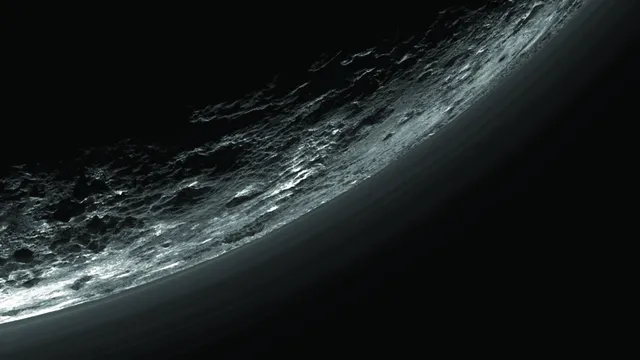Astronomers using the James Webb Space Telescope (JWST) took a fresh look at the far reaches of our solar system and found that Pluto is once again defying expectations.
When NASA's New Horizons spacecraft flew past Pluto in 2015, it shattered the notion that the dwarf planet was a lifeless ice ball, revealing instead that it is rich in icy plains and jagged mountains. But one of the biggest surprises hovered above it all: a bluish, multi-layered haze covering the planet's sky, extending more than 300 kilometers above the surface — much higher and more complex than scientists had predicted.
Now, nearly a decade later, new data from JWST confirms that Pluto's haze is not just a visual oddity, but also controls the dwarf planet's climate.
“This is unique in the solar system. Let's say it's a new type of climate,” Tanguy Bertrand, an astronomer at the Paris Observatory in France who led the analysis, told Live Science.
The results, described in a study published in the journal Nature Astronomy, suggest that similar dynamics may be at work on other fog-shrouded worlds in our solar system, and even provide clues about the early climate of our own planet.
Pluto's high-altitude fog is composed of complex organic molecules formed by reactions between methane and nitrogen under the influence of sunlight. The idea that this fog could control Pluto's climate was first proposed in 2017. Computer models showed that these particles absorb sunlight during the day and re-emit it back into space as infrared energy at night, cooling the atmosphere much more effectively than gases alone. This could also explain why Pluto's upper atmosphere has a temperature of around -203 degrees Celsius—lower than expected.
For years, however, testing this theory proved difficult. One of the main challenges was Pluto's large moon, Charon, which orbits so close to the cold planet that their thermal signals often overlap in telescope data. “Basically, we couldn't tell which part of the signal was due to Charon and which part was due to Pluto's fog,” Bertrand said.
The researchers behind the 2017 study predicted that Pluto's haze would make the world unusually bright in the mid-infrared wavelengths — a prediction that at the time could only be tested with future instruments. That opportunity arose in 2022, when the JWST's powerful infrared instruments finally managed to separate the signals from the two worlds. As expected, the faint infrared glow of Pluto's haze matched the predictions.
"In planetary science, it is unusual for a hypothesis to be confirmed so quickly, in just a few years. So we feel really lucky and extremely excited," explained Si Zhang, a planetary scientist at the University of California, Santa Cruz, who led the team since 2017.
These discoveries also open up the possibility of similar climate conditions caused by fog on other foggy worlds, such as Neptune's moon Triton or Saturn's moon Titan, Bertrand said.
Even Earth's distant past may have had similar features, the researchers say. Before oxygen changed our planet's sky, Earth may have been covered in a fog of organic particles — a blanket that may have helped stabilize temperatures and allow early life to develop.
“By studying Pluto's haze and chemistry, we can gain new insights into the conditions that made early Earth habitable,” said Zhang. | BGNES

 Breaking news
Breaking news
 Europe
Europe
 Bulgaria
Bulgaria







